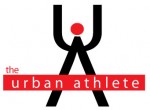I just got excited with this old paper by Eva Andersson and my graphic designs (not really) with Adobe Illustrator. Below are some graphics that explain the muscle activation workings of the hip flexors during running. Figure 1 shows muscle activation and hip range of motion during running at 4 metres per second (about a 20:50 5km run). Please note, raw EMG does not look like my blue scribbles - it is just a schematic so back off. As physiotherapists we love to talk about analyzing gait. But I am not sure we really know much about it. I often hear some brutal concepts about running that fly in the face of some pretty old research. This post along with a million to follow will slow build some good foundations of running biomechanics literature.
Figure 2 shows when all of the hip flexors are active during the running gait cycle.
Figure 1:
1. Shows where psoas and iliacus activity is coming on while the hip is still extending. Suggests the flexors may be eccentrically controlling extension and certainly getting “powered up” to fire with the stretch shortening cycle and produce hip flexion.
2. After initial foot strike there is a transient increase in hip flexion. This is most likely a shock absorption function.
3. At toe off there is still some hip extension left to occur but this is very minimal. Other research suggests that hip extension is not more during running than walking. This questions the importance of stretching hip flexors if any athlete has sufficient hip extension to begin with. A future post on Schache and Franz’s work investigating the influence of hip extension limitations, the Thomas test and anterior pelvic tilt will go into this theme further.
4. Silent Iliacus yet we are still seeing the hip flex. One reason is because the EMG signal is raw. It has not been filtered which should be done if you want your EMG signal to mimic the force production of the muscle. You see, there is something called electromechanical delay. Meaning there is a lag between muscle onset and when force is delivered through the tendon to bone to cause motion. However, the muscle is probable off before end flexion anyway suggesting this is akin to the “extensor paradox” that occurs during gait. The extensor paradox occurs when the hip and knee extenders are electrical silence somewhere around midstance. This means that these muscles are NOT ON but the joints are still extending. I liken this to the muscles as acting as springs and passively extending and to the opposite hip flexors “pulling” the body through.
Figure 2:
Stay tuned for more biomechanics posts.
Greg Lehman




[...] with changes in hip flexor power and increases in hip flexion. I often describe running (post here on insights into hip flexor function) as more of a “pulling” motion with the hip flexors (and the glutes pulling the leg [...]